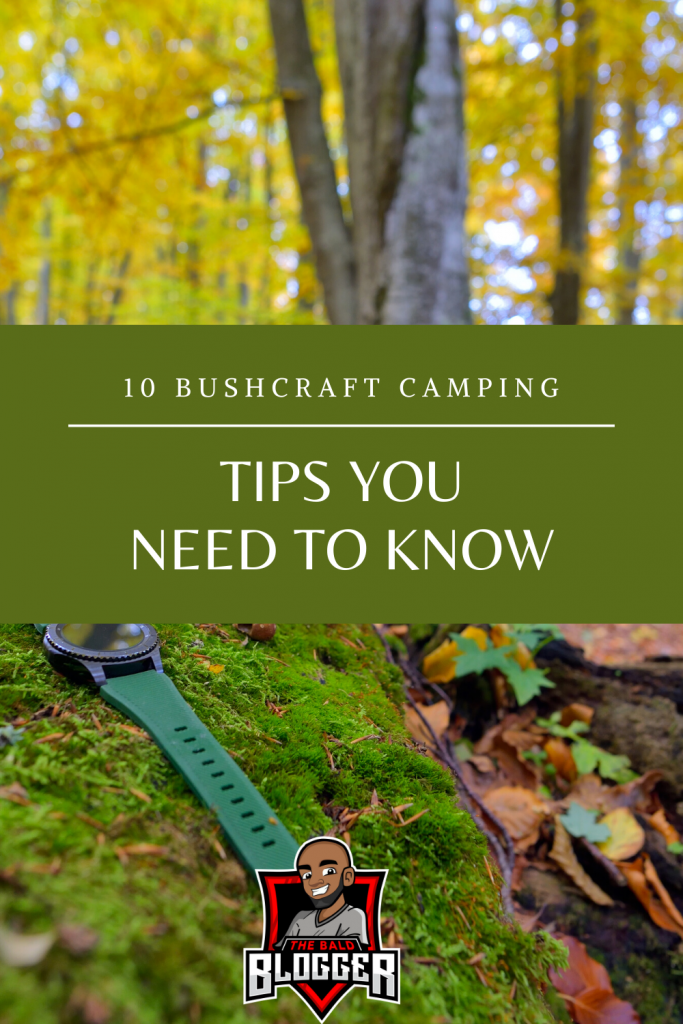10 Bushcraft Camping Tips
When the weather is inviting, the smell of fresh air, campfires and pine trees allure many people into the woods for camping trips. Bushcraft camping is one of the best ways to get close to nature, to relieve stress, exercise, eat good food, socialize, meditate, embark on a new adventure and embracing challenges outside of your comfort zone.
Sometimes there’s nothing better than sitting around a fire and roasting marshmallows with your best friends or your family. But along with the benefits and comfort camping could provide, there are hazards to be wary of.
Are you planning for a bushcraft camping adventure? Below are the top 10 bushcraft camping tips you need to survive and thrive in the wild.
Contents
Be prepared
Take time to learn what you might come across before going out – because being prepared and anticipating the problems you might encounter could help you avoid a difficult and matter of life and death situation.
Have plan A, plan B, plan C until the alphabet runs out
Before you go on a trip, you need to make as many plans as you can. Have a ‘Plan A’ but also a ‘Plan B’, ‘Plan C’ and even more in your pocket. You need to be flexible and prepared to switch if things go wrong.
The right outfit
Keep your outfit simple and streamlined as possible. Try to minimize the amount of clothing to bring while maximizing its functionality. The amount of clothing depends on how long the camping trip will take, the most essential clothing are waterproof shell, heavy warm layer, spare clothes like socks, underwear and T-shirt, lightweight warm layer, Bandana, Warm hat and sun hat.
Pack the important stuff
Packing is a major part of preparation, but it’s very much about personal preference and depends on the conditions you expect to encounter. Travel light and only pack what you need, but never forget the essentials. Bring essentials like knife, sharpening stone, fireflash, first-aid kit, metal mug and water bottle, and a compass.
Learn what to eat
There’s far more to eating wild than munching on squishy grubs and staying away from poisonous toadstools. Know your bush tucker and how to eat it, because having a menu of what to look for can keep you from starving.
Learn how to build a shelter
In the woods, there are a lot of hazard to be cautious of. You need to protect yourself from the elements because if you don’t, then depending on what climate you’re in, you can quickly become cold, wet or overheated. If it goes to the extreme, your body won’t be able to cope. Tarps are particularly well suited to sleeping in woodlands. They are easy to pitch, particularly with knowledge of a few simple yet versatile knots and plenty of trees to tie off to.
Develop your skillset
Camping in the woods requires a certain skillset to survive. Learn as many skills, techniques and survival strategies as you can. Take courses, read books and magazines, watch YouTube
Practice making a good fire
Fire management skills is needed to keep a fire going all night and for cooking. Always practice building a fire because you never know when you might need to stay warm.
Stay calm
When things have gone bad during camping like an occurrence of a natural disaster, an injury or one of your friend is in danger, slow down, think clearly and choose wisely S.T.O.P (Stop, Think, Observe, and Plan). Panic is one of the biggest dangers of all when you’re out in the wilderness. Being able to control that is crucial.
Enjoy the wilderness
Bushcraft camping is not all about how to survive in the wilderness – it goes far beyond that. Being able to live your life by being part of our natural world using a more indigenous human approach is also at its core. Using these skills to live off the land is one of the most satisfying or enjoyable things you can do, both physically and mentally.

